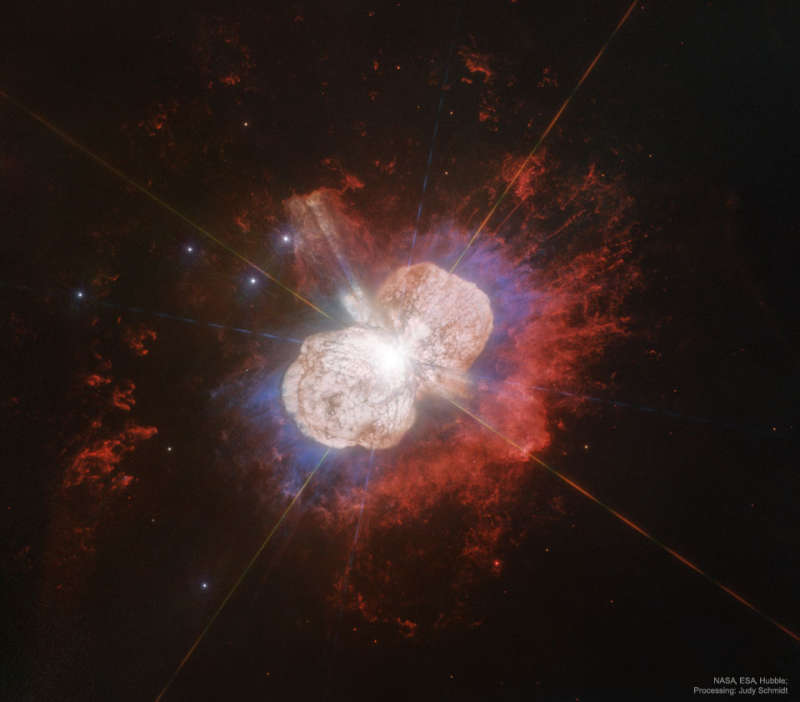
|
Explanation: Eta Carinae may be about to explode. But no one knows when - it may be next year, it may be one million years from now. Eta Carinae's mass - about 100 times greater than our Sun - makes it an excellent candidate for a full blown supernova. Historical records do show that about 170 years ago Eta Carinae underwent an unusual outburst that made it one of the brightest stars in the southern sky. Eta Carinae, in the Keyhole Nebula, is the only star currently thought to emit natural LASER light. This featured image brings out details in the unusual nebula that surrounds this rogue star. Diffraction spikes, caused by the telescope, are visible as bright multi-colored streaks emanating from Eta Carinae's center. Two distinct lobes of the Homunculus Nebula encompass the hot central region, while some strange radial streaks are visible in red extending toward the image right. The lobes are filled with lanes of gas and dust which absorb the blue and ultraviolet light emitted near the center. The streaks, however, remain unexplained.
|
January February March April May June July August September October November December |
| |||||||||||||||||||||||||||||||||||||||||||||||||||||||
NASA Web Site Statements, Warnings, and Disclaimers
NASA Official: Jay Norris. Specific rights apply.
A service of: LHEA at NASA / GSFC
& Michigan Tech. U.
Based on Astronomy Picture
Of the Day
Publications with keywords: Eta Carinae - supernova
Publications with words: Eta Carinae - supernova
See also:
- APOD: 2025 July 31 Á Supernova 2025rbs in NGC 7331
- The Great Carina Nebula
- APOD: 2023 October 11 Á NGC 1097: Spiral Galaxy with Supernova
- APOD: 2023 May 22 Á Supernova Discovered in Nearby Spiral Galaxy M101
- Supernova Cannon Expels Pulsar J0002
- The Great Nebula in Carina
- Eta Car: 3D Model of the Most Dangerous Star Known
